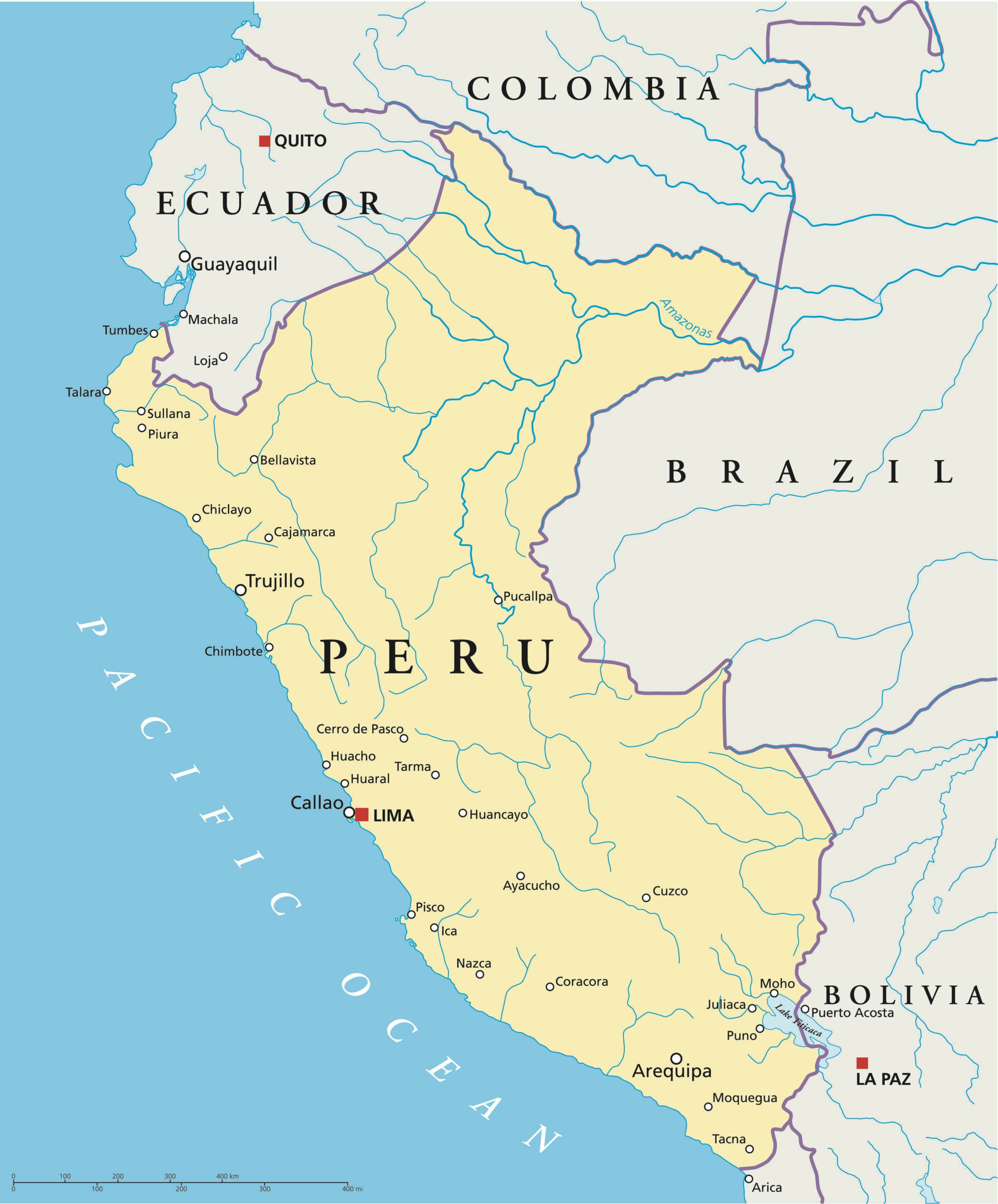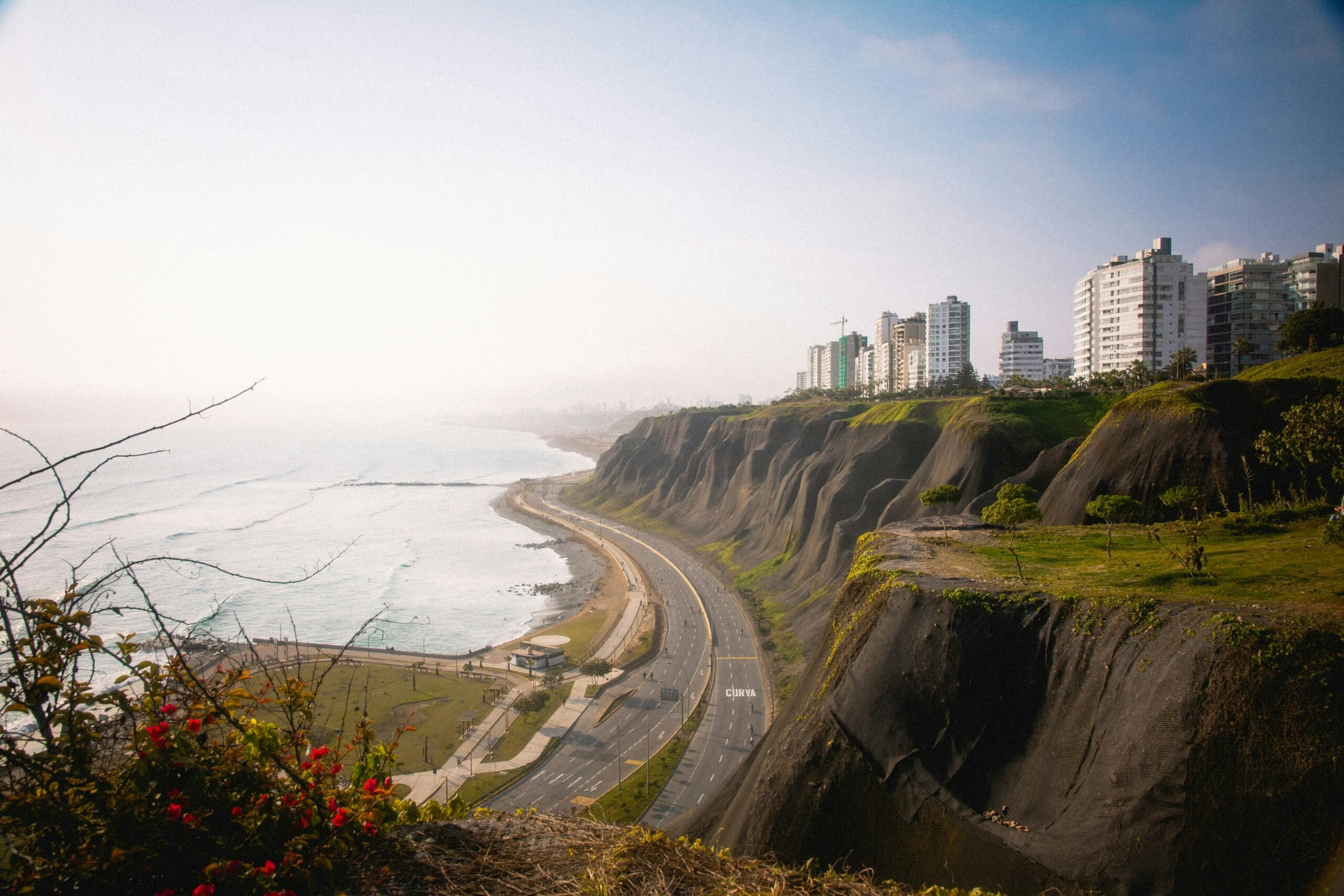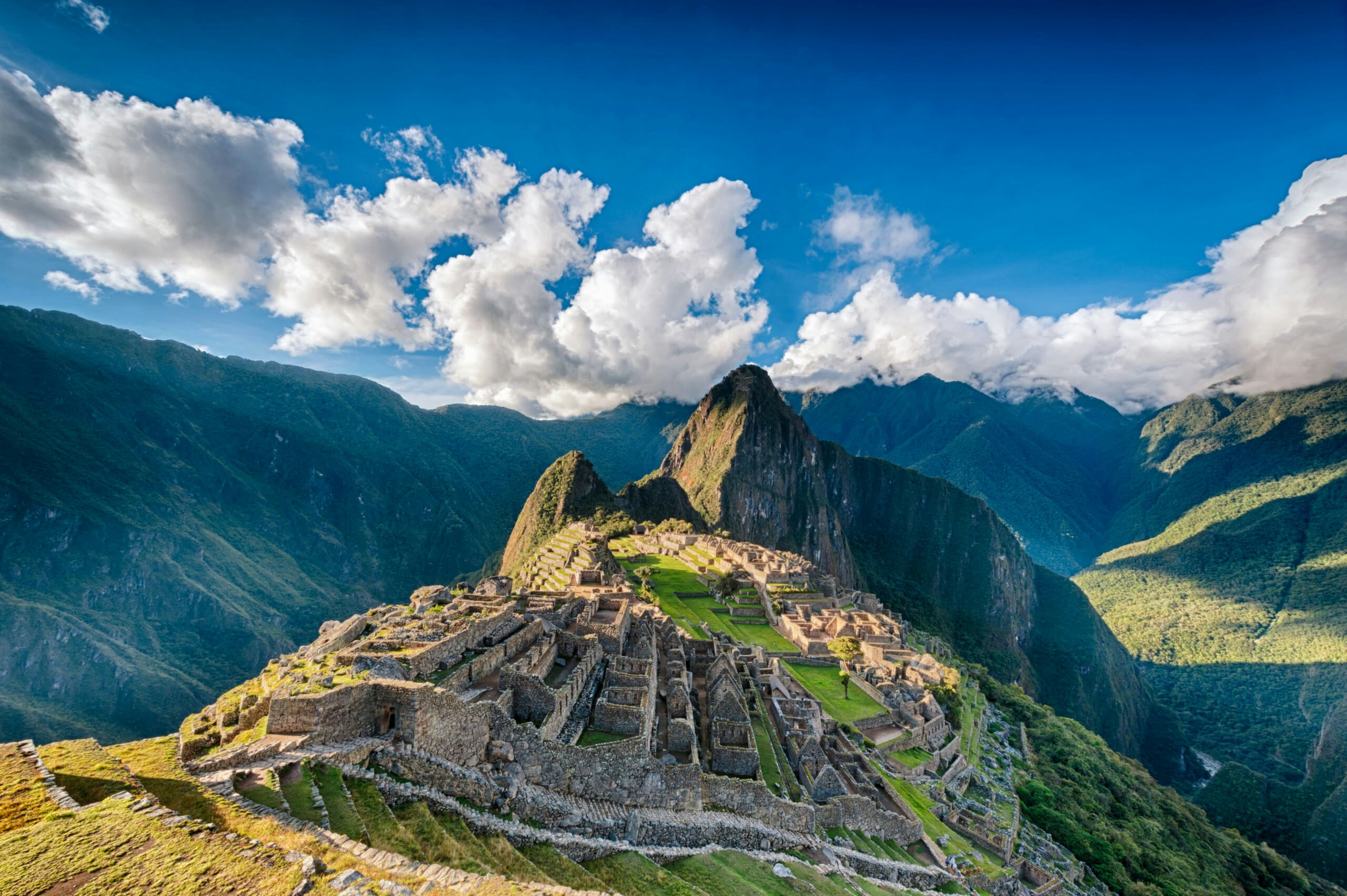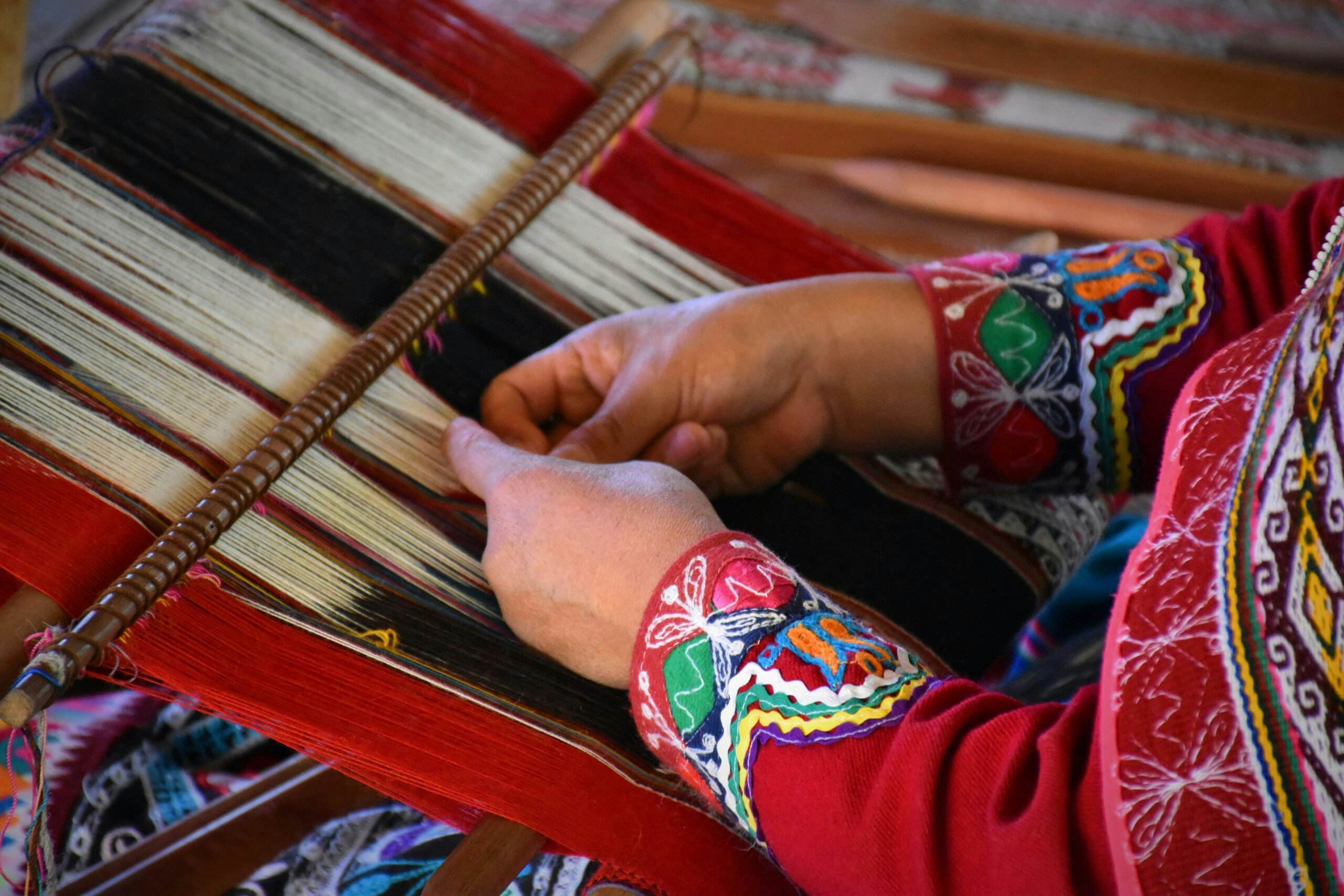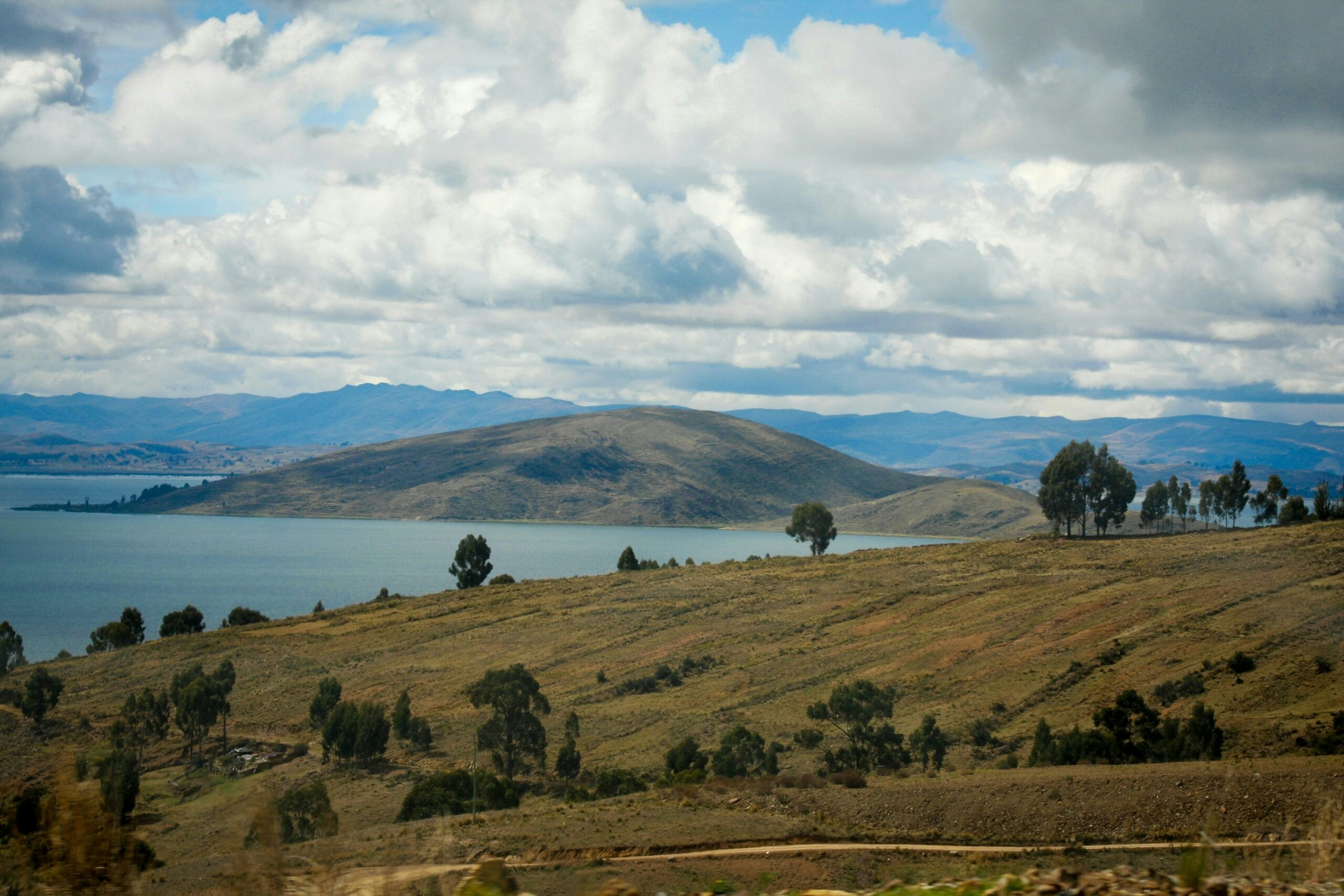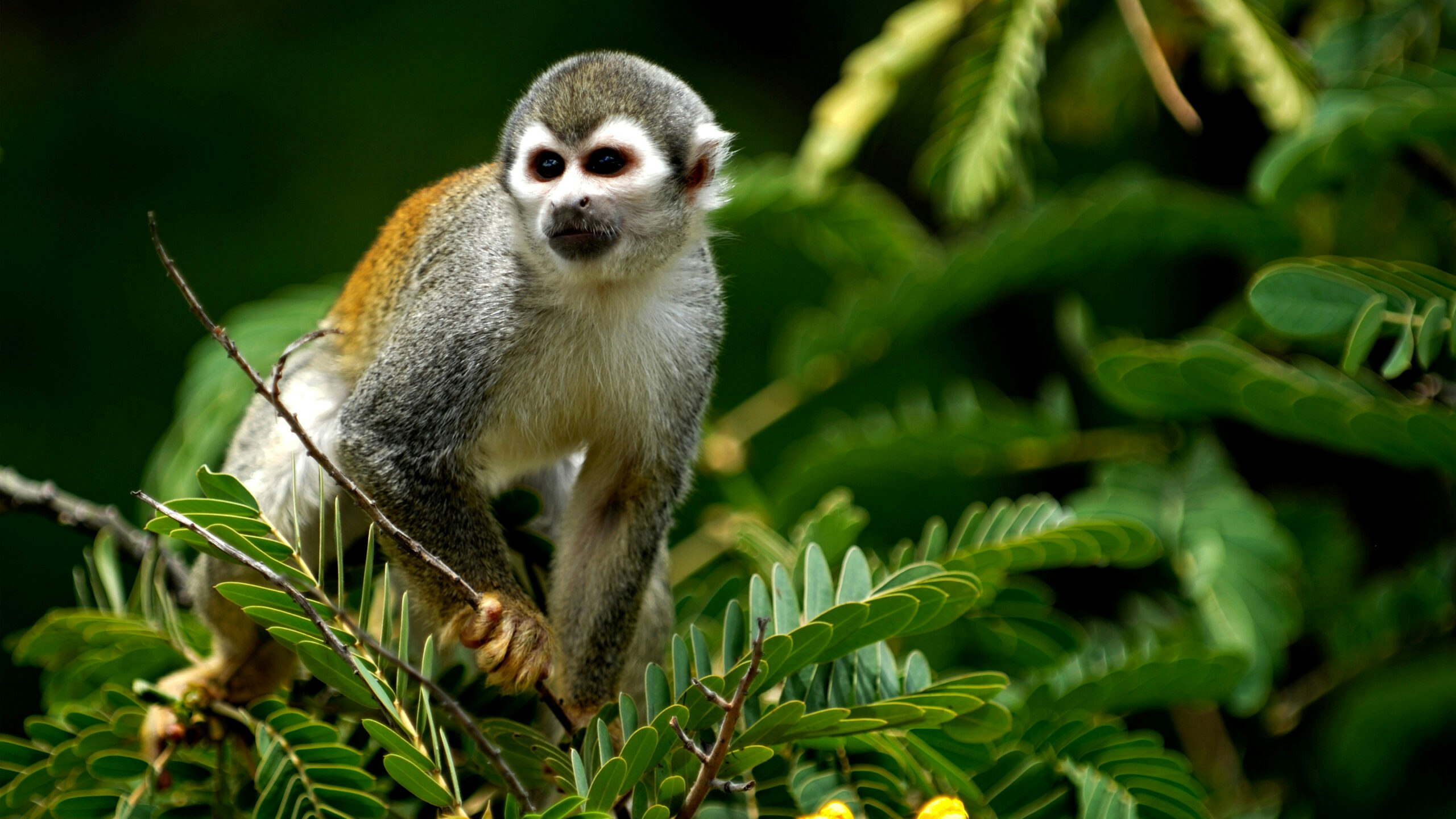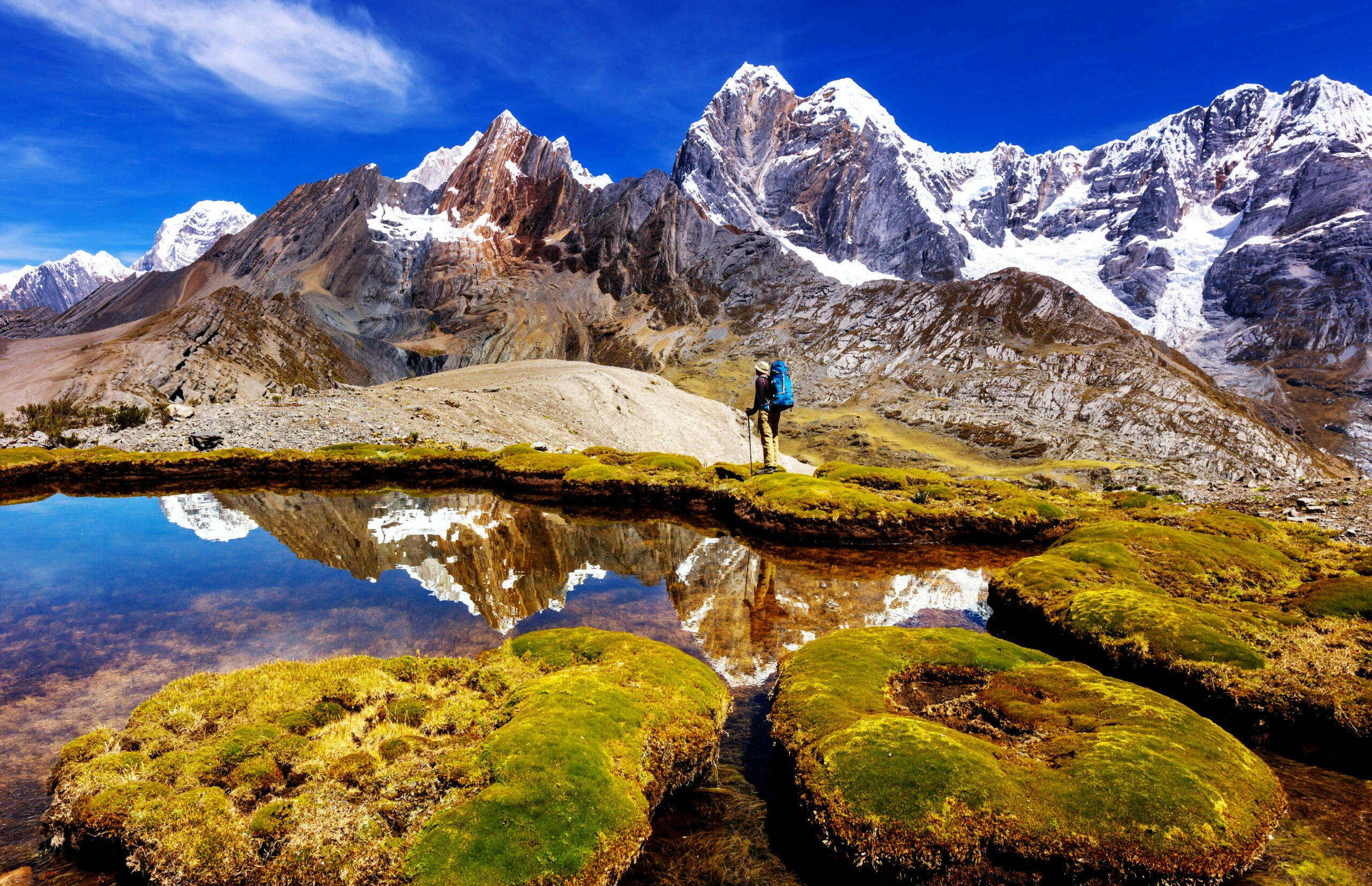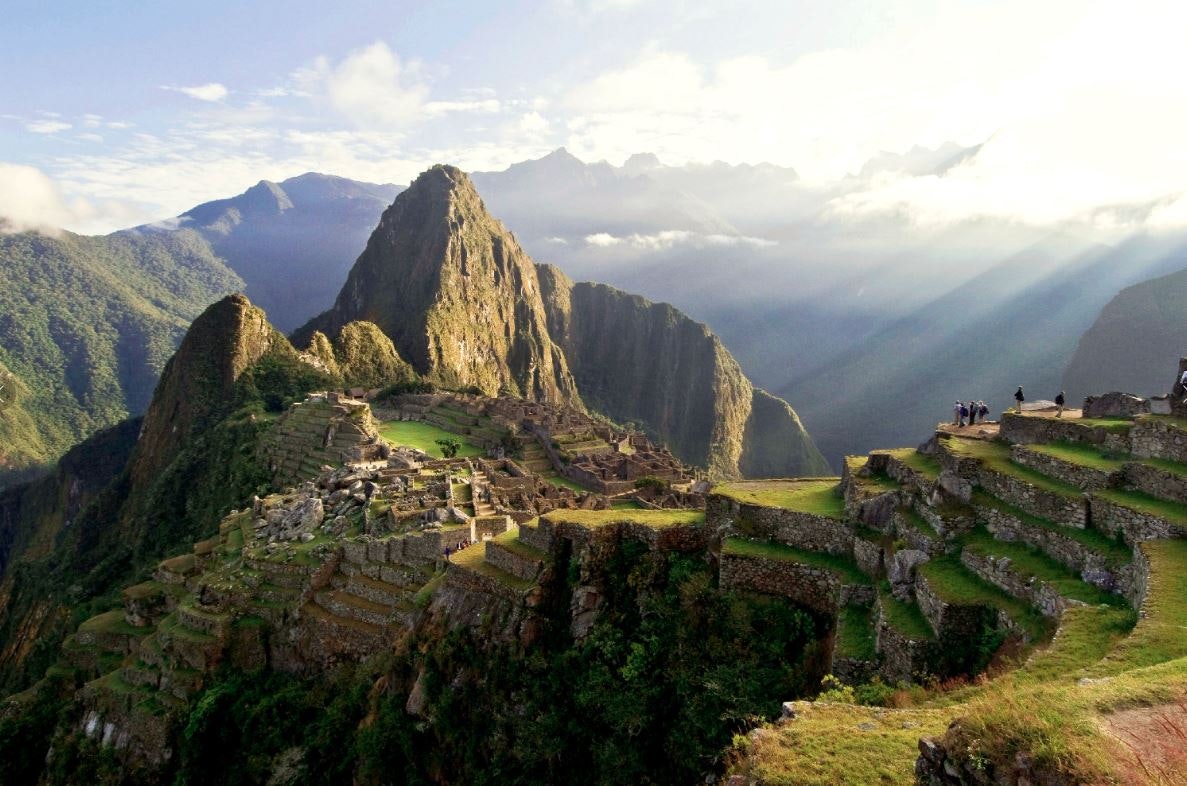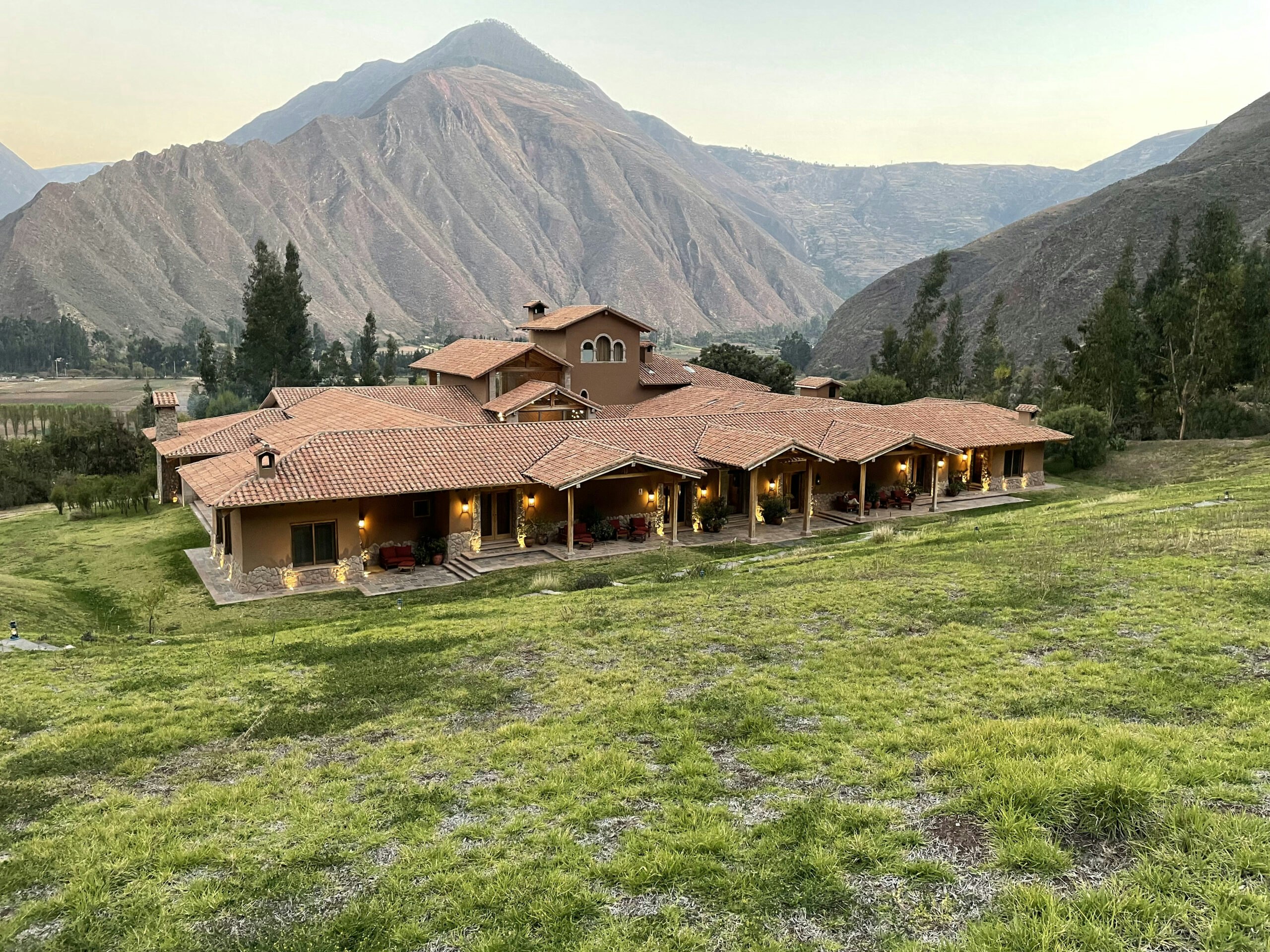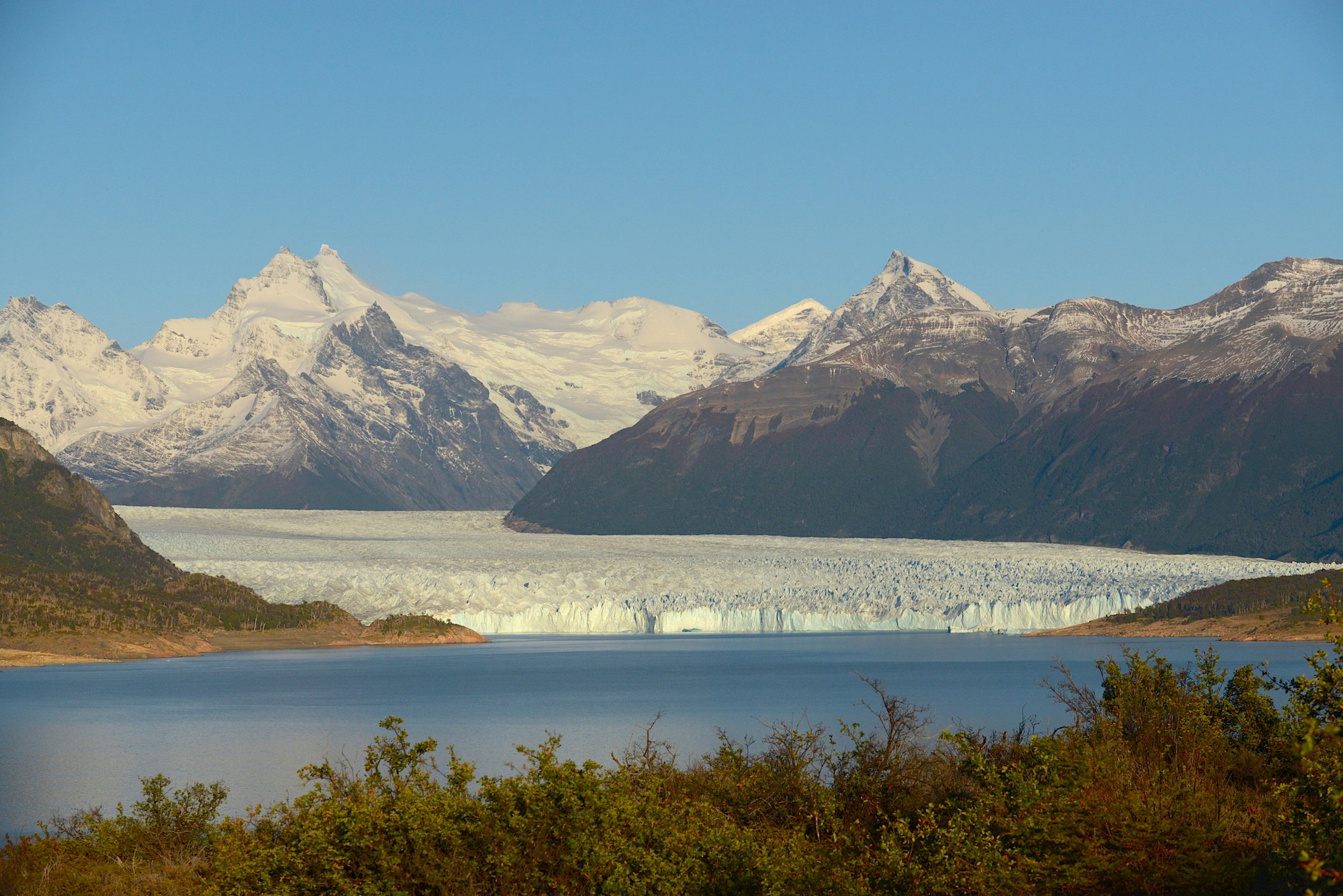
Peru Travel Guide
Discover Peru
Once considered a destination for hardcore adventurers, Peru is no longer a destination of rustic lodges, unworn trails, and frequent safety warnings. Millions of travelers visit Peru every year, discovering a nation that is no longer just for the backpacking crowd. Today, travelers can easily access Incan ruins like Machu Picchu, safely hike the Andes, explore its colonial towns like Arequipa, and even meet indigenous tribes that still live and work the way they did hundreds of years ago. The Amazon jungle encompasses much of northern Peru while southern Peru’s dry climate hosts active volcanoes and ancient land drawings, all of which can be explored via self-guided itineraries or with dedicated and knowledgeable guides.
Peru’s capital offers up an amazing culinary scene, becoming one of Latin America’s best food destinations especially for those travelers looking to sample one of Lima’s many Michelin-starred restaurants. The 1,500-mile coastline is dotted with gorgeous beaches, and the Andes mountains tempt hikers with awe-inspiring views and unspoiled glacier wilderness. Wild alpacas greet travelers as they trek up the trails to misty-peaked Machu Picchu, exploring what is now considered one of the seven wonders of the world. With a history as diverse as its geography, Peru has something to offer all types of travelers—from luxury to rustic—making it one of South America’s most unique and extraordinary destinations.
Planning a trip to Peru? Read on to find out when to visit, what to do, and more to make your vacation unforgettable.
What is the best time to visit Peru?
The months of June—August are the best time to visit Peru. While the northern hemisphere heats up, Peru is at its most pleasant. Clear skies, bright sunlight, and cooler temperatures make hiking the Andes more enjoyable, although this season is also the country’s busiest season for travelers. To avoid the crowds and still enjoy mild temperatures, consider September–November, when the weather starts to get warmer (but too hot) and the crowds thin out—perfect for hiking adventures.
How to get to Peru?
From the mainland United States, there are multiple airports that fly direct to Lima’s Jorge Chavez International Airport, most of which are in the western or southern US. The most popular routes are from New York, Miami, Atlanta, Houston, Dallas, and Los Angeles, with American, United, and Delta being the largest carriers to fly direct. Flying from southern states will take less than six hours while flying from NY or LA is about an eight-hour flight. Travelers can also fly into Cusco or Arequipa but will need to fly into Lima first to transfer to an in-country flight.
How to get around in Peru?
Bus travel is the most widely used transportation within Peru and the least expensive, but the buses are also prone to accidents, especially on mountain roads. For those who are short on time, inter-country air travel is your best bet—although expect to pay a heftier price. While car rentals are also available, it’s not recommended—many roads are unpaved, too narrow, or there isn’t enough signage. Despite there not being a lot of train lines, trains are a popular traveler option, with train travel available between popular sites like Cusco to Machu Picchu or Lima to Huancayo. The luxury Andean Explorer train from PeruRail is an option to see major sites, taking travelers from Cusco to Arequipa with visits at Puno, Lake Titicaca, and the Uros Islands. The journey also showcases gorgeous Andean landscapes and offers sleeping accommodations and locally sourced meals over its three-day route.
Do I need a visa to visit Peru?
US citizens do not need a visa for stays up to 90 days, but passports must be valid for six months at time of entry. Citizens of other countries should check with their local embassy for entry requirements.
How many days should I spend in Peru?
If visiting Machu Picchu, Cusco, and the surrounding areas, plan on spending at least 7-10 days as travel between locations will add time to your trip—add a few more days if you plan on mostly hiking through the Andes.
If you want to spend time in Lima or Arequipa, add at least one or two days. For those who want to experience all of the highlights—cities, the main Incan ruins, the coast, and the jungle, plan on no less than three weeks.
What are the top 5 places to visit in Peru?
1. Lima
The capital of Peru is a cosmopolitan city with a plethora of cultural activities, culinary delights, and colonial-style architecture.
One of South America’s most vibrant food scenes, Lima has over 25 Michelin-starred restaurants, and in 2023 had four restaurants on the World’s 50 Best Restaurants list (including first-placed Central).
Between memorable meals, travelers can spend time exploring the 16th-century Plaza de Armas and the important palaces and buildings that surround it, including the Presidential Palace, Casa de Aliaga (the oldest Colonial mansion in Lima), Lima Cathedral, multiple museums, and the Monastery of San Francisco and its catacombs, a UNESCO World Heritage Site that houses over 25,000 bodies in its labyrinth of tunnels.
In the Miraflores district, you can marvel at Huaca Pucllana, a 1,500-year-old, pre-Inca adobe and clay pyramid, and afterwards, you can explore the romantic Barranco district with its trendy shops, bars, and restaurants. For those who like to stay up late, the city’s nightlife ramps up around 11pm, with plenty of bars located in the Miraflores and Barranco districts.
And for those who need a quiet break from the city, El Silencio is a white-sand beach located about 30 minutes outside Lima, or further out is beautiful Punta Hermosa, a popular beachside area with a number of beaches good for surfing, swimming, and exploring sea coves.
2. Cusco and Machu Picchu
Cusco is a UNESCO World Heritage Site and is one of the most visited cities in Peru, primarily because of the awe-inspiring Machu Picchu ruins that reside nearby. Besides Machu Picchu, the area is also the gateway to the Sacred Valley—which sits to the north of the ruins—and visitors can gaze at the stunning views of the Amazon Basin.
Cusco itself is a buzzing, beautiful blend, filled with backpacker hostels and five-star retreats, street food, local markets, and boutiques, and is the best place to stay for trips to nearby Machu Picchu. Set in a remote, achingly beautiful corner of the Andes with views of emerald peaks, Machu Picchu is a UNESCO World Heritage Site that leaves travelers marveling at a past civilization’s ingenuity. It’s Peru’s most famous site and one that can’t be missed if traveling in the area.
3. Arequipa
Sitting at the foot of three volcanoes, Peru’s second-largest city offers up a more relaxed experience than busy Lima. Colonial-era buildings built in white volcanic stone line its main plaza, the Plaza de Armas (a UNESCO World Heritage Site), where travelers can visit the city’s Cathedral, Santa Catalina Monastery, and the oldest church in the city, Santo Domingo Church and Convent. Cafes and shops line the plaza, making it an easy and laid-back day of exploration.
Near Arequipa is Colca Canyon, one of Peru’s best hiking destinations, but it’s the looming giant of the El Misti volcano that truly entices. For those who like their hikes a bit rougher, climb up to El Misti’s 19,000-foot peak to see stunning views of the surrounding area. Climbers might even see volcanic gas venting from this still-active volcano.
4. Lake Titicaca and the Uros Islands
Lake Titicaca is the largest freshwater lake in South America, straddling the border between Peru and Bolivia.
Considered one of the highest navigable lakes in the world at 12,500 feet, the lake is almost 120 miles long and 50 miles wide and is considered an important part of Inca culture. According to legend, the Inca’s first king, Manco Capac, was born in Lake Titicaca, and the area is rife with Inca legends. The deepest part of the lake is almost 1,000 feet deep—a pre-Inca temple from over 1,000 years ago sits at the bottom of the lake—and travelers can explore one of its 40+ islands, including the Island of the Sun, home to the Inca god Inti, and the Island of the Moon, with its Inca ruins of a virgin priestess convent.
Most travelers to the lake opt to visit the Uros Islands, a series of floating reed islands that are home to the Uros people, who are said to be direct descendants from a culture that dates back 1,500 years ago. Today, the Uros offer up traditional crafts and goods for visitors, which is primarily how they make their living, and visitors can even take a ride on one of their reed boats.
5. The Amazon Rainforest
Covering nearly two-thirds of the country, Peru’s rainforest is the second-largest part of the Amazon (after Brazil).
Broken out into lowland and highland jungle, the Amazon is one of the most bio-diverse in South America and is home to the Amazon basin, where the might Amazon River starts.
Hosting approximately one-third of the world’s bird species and over half of the world’s mammal species, the Amazon Rainforest is home to brightly colored macaws, cotingas, and paradise tanagers as well as many other unique birds.
Additionally, the largest snake in the world, the green anaconda, can be found here as well as jaguars, pumas, howler monkeys, capybaras, and the Amazon pink river dolphin.
Interestingly, the Amazon pink river dolphin is a rare and endangered species of dolphin that is also part of local folklore—a mythological creature that turns into a man at night to seduce local women.
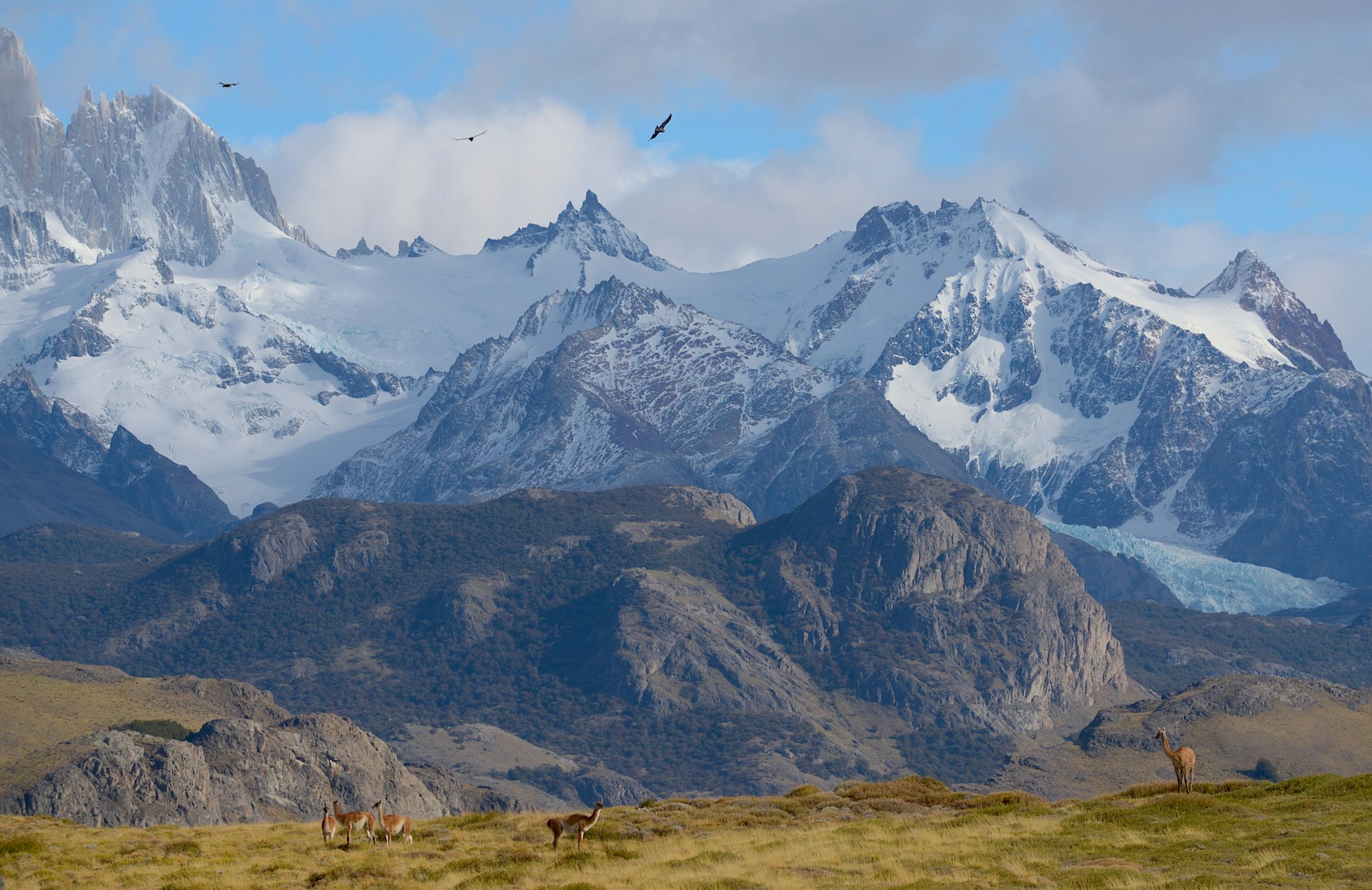
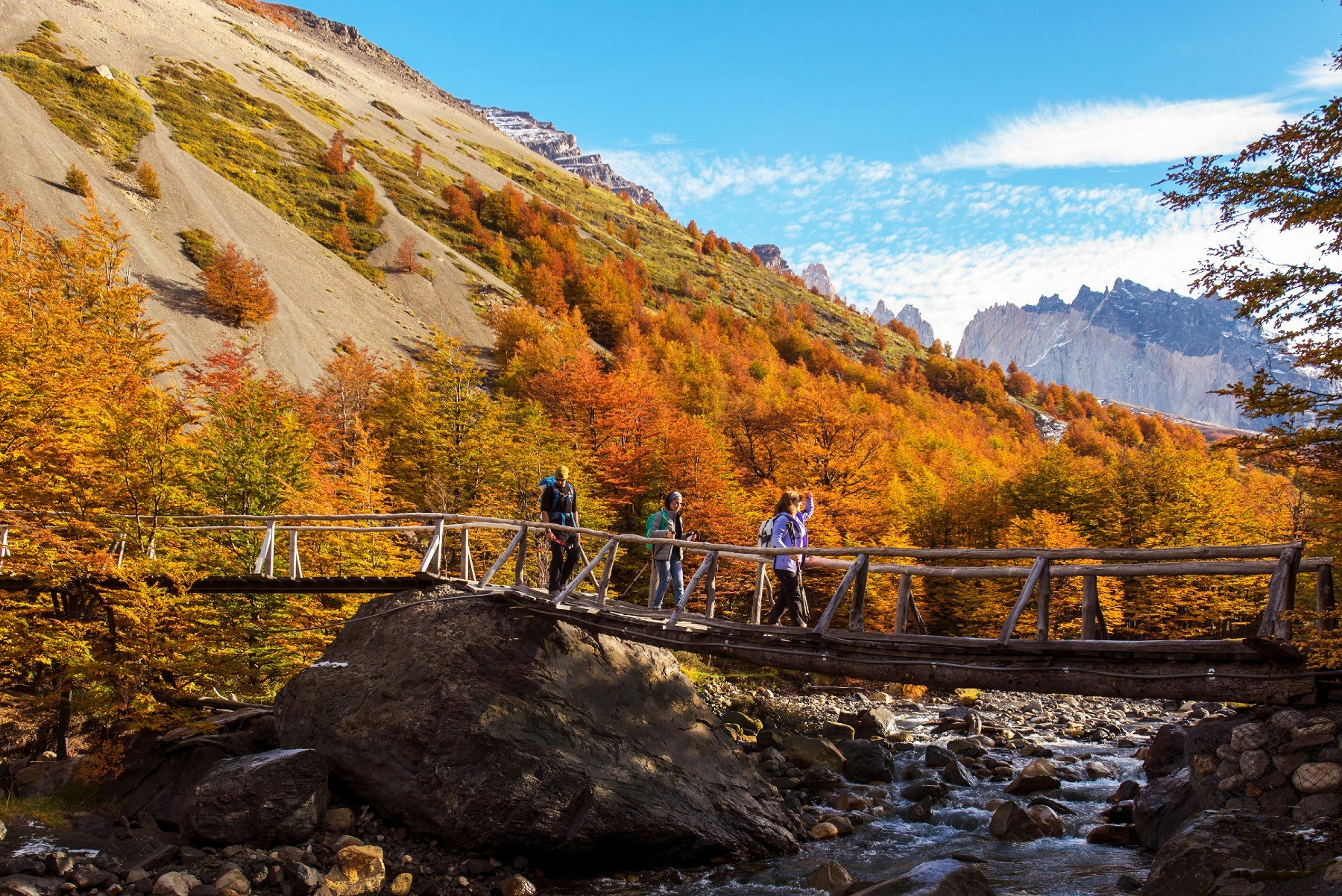
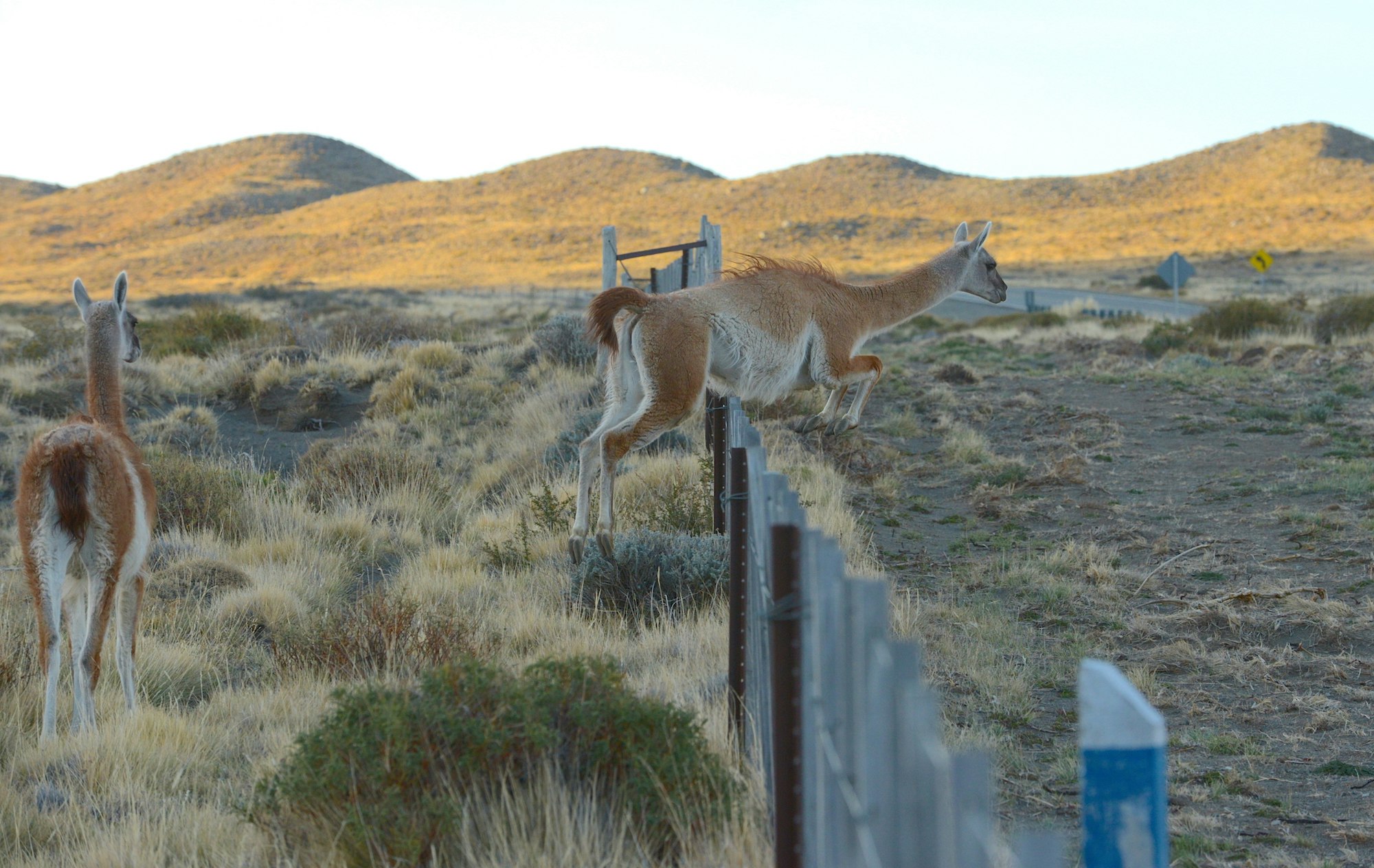

What are the best Peru adventure tours?
1. Peru Cordillera Blanca Private Trekking
Experience the extraordinary beauty of Peru’s Cordillera Blanca on this 13-day, high-altitude trek for experienced hikers. The stunning Cordillera Blanca is the highest tropical mountain range in the world, with 27 peaks over 19,000 feet, linked by isolated valleys. Hike through a glacial wilderness of translucent turquoise lakes, hidden waterfalls, and striking pinnacles, and keep an eye out for vicuñas and soaring condors. Drink in vistas of sharply ridged peaks, including the remarkable “perfect” pyramid of Alpamayo. While challenging, it is a fantastic, bucket-list triumph for those hikers who choose to undertake it.
2. Peru Cordillera Huayhuash Trekking
Tackle one of the world’s most spectacular mountain circuits in the Cordillera Huayhuash, a compact yet magnificent range that’s richly glaciated, steep, and dramatic. Six of Peru’s highest mountains rise from this striking massif, and it was here that the gripping memoir and film Touching the Void took place, portraying the memorable tale of climbers Joe Simpson and Simon Yates, the first mountaineers to scale Siula Grande.
Undoubtedly, this classic, 16-day trek in the Peruvian Andes is challenging, but rewarding. Hike with unequalled views of its turquoise glacial lakes, jagged, snow-capped peaks, and stunning hanging glaciers that extend thousands of feet from the peaks. Let our experienced team of mountain guides support you in this trek of a lifetime through remote and rugged terrain—a bucket-list adventure for hardcore hikers.
3. Peru Inca Trail Hiking
The Inca Trail trek to Machu Picchu is an epic pilgrimage and one of the world’s classic adventures. History unfolds as you follow ancient Inca footpaths and stone staircases over Andes mountain passes and through lush valleys and misty forests, stopping to explore evocative ruins not accessible any other way.
Your reward? Arriving at the Inti Punku, or Sun Gate!
4. Peru Machu Picchu & Salkantay Lodge-to-Lodge Trekking
The hike along the Inca trail to Machu Picchu is a legendary journey and one of the world’s classic adventures. As you traverse the old Inca pathways and stone steps across Andean mountain passes, through verdant valleys and foggy woods, history comes alive. This route allows you to discover captivating ruins that cannot be reached by any other means.
Your reward? Arriving at the Inti Punku, or Sun Gate, with an unforgettable first view over South America’s most awe-inspiring archaeological site—the enigmatic stone citadel of Machu Picchu.
Our nine-day Inca Trail experience is unlike any other, and we make sure to avoid large groups of hikers.
Additionally, our guides provide ample time for you to acclimate to the high altitude in the Sacred Valley before the trek, so that you can best enjoy the trek and Machu Picchu.
View Peru Machu Picchu & Salkantay Lodge-to-Lodge Trekking Tour
5. Argentina & Chile Patagonia Luxury Hiking
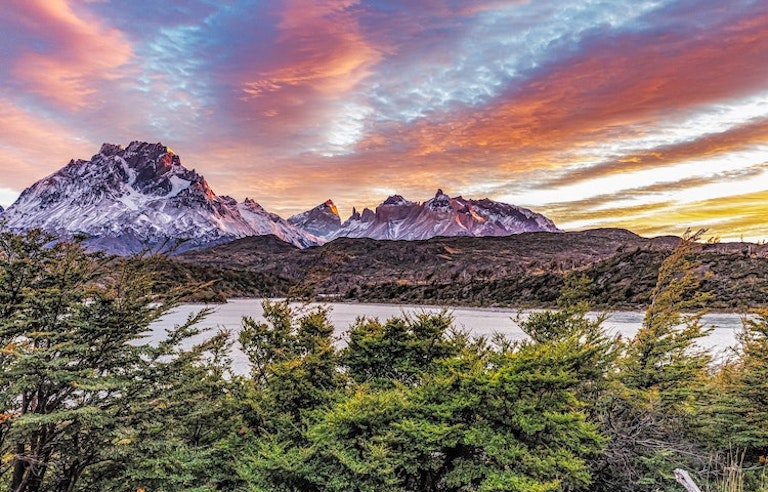
On this express luxury version of our classic Patagonia hiking adventures, enjoy perfectly paced day hikes with picture-postcard backdrops including the legendary Fitz Roy and Cerro Torre in Los Glaciares National Park, the Perito Moreno Glacier, the vast Patagonian steppe, and the sky-piercing towers and horns of Torres del Paine – all in just 9 days!
Begin with a stay at a comfortable hotel that’s superbly situated in the mountaineering hub of El Chalten, and cap it off with stays at two luxury lodges – EOLO in the Patagonian steppe near El Calafate and Tierra Patagonia in Torres del Paine.
A must-do for the hiking enthusiast who’s looking for indulgent comfort and cuisine at the end of each day!
6. Peru Sacred Valley & Machu Picchu Hiking
Discover both the cultural and scenic highlights of Peru, from the Sacred Valley to Machu Picchu. Combine awe-inspiring day-hikes through fertile valleys and highland plateaus with a rich mix of visits to ancient sites and interactive experiences in traditional villages—all from the comfort of perfectly located luxury hotels.
Lastly, cap it off with a half-day hiking up the classic Inca Trail to the legendary lost citadel of Machu Picchu, and a full day to experience the site at a leisurely pace the following day.
This inspiring eight-day trip captures the best features of Peru in an achievable hiking adventure you won’t soon forget!
Where are the best places to stay in Peru?
Accommodations in Peru are varied, depending on location. For instance, major tourist areas will offer luxury to budget hotels. On the other hand, less-traveled areas might only have campsites, inns, hostels, and guest houses. For travelers visiting the Peruvian Amazon, luxury jungle lodges are becoming more popular. Many hotels will offer standard amenities such as fitness centers and WI-FI, and Airbnb also lists options, especially in major areas like Lima, Arequipa, and Cusco.
1. Inkaterra Machu Picchu Pueblo Hotel: Machu Picchu, Peru
A village in its own right, Inkaterra Machu Picchu comprises 83 whitewashed casitas set among 12 acres of cloud forest complete with terraced hills, waterfalls, and lush gardens. The individual casitas feature inviting beds and rustically elegant decor. Diners in the first-class restaurant can indulge in Peruvian cuisine with a modern twist while admiring views over the Vilcanota River.
2. Palacio del Inka: Cusco, Peru
Housed in a 500-year-old mansion, the exquisite Palacio del Inka is located in the historic center of Cusco, just a five-minute walk from the main square. The rooms are beautifully appointed, decorated with Peruvian art, handcrafted furnishings, and modern conveniences and comforts, such as LED TV, high-speed Internet access, and comfortable beds.
3. Las Qolqas Eco Resort: Sacred Valley, Peru
MT Sobek’s specially designed wilderness camping experience includes comfortable dome tents, all well-appointed with elevated cot beds, mattresses, sheets, duvet, and pillows. Come morning, warm water basins, soap, and towels await, as well as hot bucket-style showers. Meals are served alfresco or in the enclosed mess tent. Evenings include sundowners and pre-dinner snacks around the campfire. Your guiding team will move the mobile camp each day and you will arrive in a new part of the Serengeti with everything already set up!
4. Inkaterra Hacienda Urubamba: Sacred Valley, Peru
This Inkaterra property is a modern, hacienda-style hotel set on 100 acres in the countryside between Cusco and Machu Picchu. With only 12 rooms and 24 casitas, guests can experience solitude, space, and serenity while taking in breathtaking views of the Sacred Valley. The hotel’s architecture and interiors reflect the region’s cultural history, with colonial furniture, Inca masks, and handcrafted woodwork throughout.
Interesting Things to Know About Peru
- The Andes are the longest mountain range in the world, covering a distance of 5,500 miles that extends along the western part of South America—from the southern tip to the top of the continent. They are also the highest mountain range outside Asia, with an average height of 13,000 feet. In Peru, they are recognized for being the home of the Inca and where Machu Picchu is situated.
- The Nazca Lines are a series of geoglyphs (land art) found in southern Peru that extend almost 200 miles across the arid landscape. Hypothesized to have been constructed by the Nazca people 2,000 years ago, the designs form animals, plants, figures, and shapes including a monkey, a condor, a spider, and spiral designs. They can’t be seen from the ground, but only from the air and remain a mystery to this day as to why they were constructed.
- The oldest continually operating university in the Americas is the National University of San Marcos. Located in Lima, this public university started in the 16th century by Emperor Carlos I of Spain. One of its most notable alumni is the Noble Prize Winner Mario Vargas Llosa, a 20th century novelist.
- Additionally, located near Cusco, Peru’s Rainbow Mountain (also known as Vinicunca, the Quechuan word for “colored mountain”) has become a popular travel destination for travelers in the Cusco area. With gold, turquoise, purple, and pink sediment “stripes,” the mountain is a vibrant display of color that was only revealed in 2013 when melting snow uncovered the streaked bands of color. Moreover, it is best viewed between June—August when cloud cover and fog is minimal.
- Peru is the birthplace of the potato, with predecessors of the Inca cultivating potatoes as far back as 8,000 BC. Markedly, it wasn’t until the Spanish conquistadors came along in the 16th century that Europe was introduced to the potato, with the cooler temperatures of Ireland having the best conditions to grow the crop.
What is the language in Peru?
Spanish is the national language of Peru, however, the languages of Quechua and Aymara are also officially recognized. Quechua is an indigenous language that dates back to pre-Colombian times, with the Inca known to have spoken a variant of the language. Today, Quechua is spoken by approximately four million people in Peru (and over eight million worldwide). The indigenous Aymara language is spoken by one million people.
What to eat in Peru?
Peru has become one of South America’s favorite foodie destinations, especially in Lima where Michelin-starred restaurants and hot new eateries take center stage. But even in the fancy spots, travelers are likely to encounter Peru’s favorite dishes. For seafood lovers, cerviche is almost a country staple, a combination of fresh fish marinated with lime juice, peppers, onions, and corn, but conchas negras (black clams) and fried fish are also popular. A meal that is sure to raise the eyebrows of most Americans is cuy, or guinea pig. Popular in many places throughout Peru, cuy is seasoned with herbs before being roasted, and is often served with potatoes. Other favorite meat dishes include aji de gallina (a creamy chicken stew), pollo a la brasa (roasted chicken), and anticuchos (grilled beef heart), the latter usually eaten as street food.
Favorite vegetable dishes include papas a la huancaina (potatoes in spicy cheese sauce), rocoto relleno (stuffed peppers), and causa (potato casserole with tuna or chicken). Travelers should also try the hard liquor pisco, the national drink of Peru. Made from fermented grapes, the drink tastes similar to brandy and tequila. Another local drink is chicha, a corn-fermented drink that has pre-Inca roots. The chicha is considered to be an important drink in many cultures throughout the country. The most common version is chicha morada, which gets its purple hue from the purple corn used to ferment it and with a taste similar to mulled wine.
What is the currency in Peru?
The official currency of Peru is the sol, which comes in bill denominations of 10, 20, 50, 100, and 200 soles. Coins are broken out by 10, 20, and 50 cents and also come in 1-, 2-, and 5-sol coins. One sol equals approximately 25 cents USD. Most cities accept credit cards, but make sure to have cash on hand for smaller villages, markets, and when trading with local people. A lot of places will even accept US dollars if you find yourself short of soles, but ATMS are also relatively common especially in well-traveled areas and cities.
What is the electricity in Peru?
The electrical current in Peru is 220 volts. The plugs and sockets used in Peru are type A, B, and C. US travelers will need a volt travel adapter as US electronics are 110-120V (and use type A or B outlets). Most cellphones can use both types of volts, but make sure to check the input levels to know what your device can handle—usually marked as INPUT 110V/220V.
A good resource to see images of plug types is www.power-plugs-sockets.com.
What is the time zone in Peru?
Peru only has one time zone—known as Peru Time—and does not observe Daylight Saving Time changes. During US summer, Peru Time is the same as Central Time in the US. During US winter, Peru Time is the same as US Eastern Time.
What to wear in Peru?
Most visitors to Peru tend to come in North America summer when Peru is experiencing its winter, which is still temperate by North American weather patterns (expect highs up to 70 degrees and lows down to around 50 degrees).
Loose clothing that can be layered is best, allowing you to take off layers as the day heats up. A light jacket or fleece is needed for the cooler evenings, and long pants should be the norm for both men and women as shorts aren’t usually worn except near beaches and in summertime (although it’s acceptable to wear them, you will look like a tourist if you do). For evenings out, have a nice jacket, pants, and a buttoned shirt or blouse. And for trekking, hiking boots, layers to add as you ascend the Andes, and a daypack are the norm.
